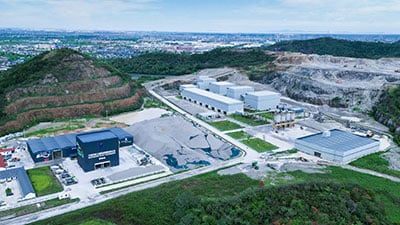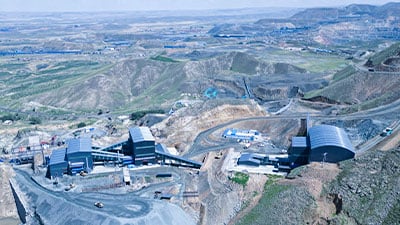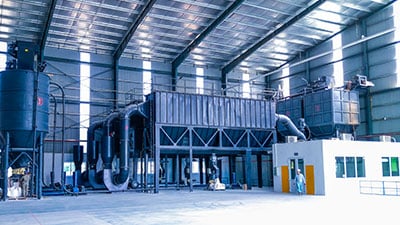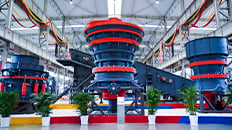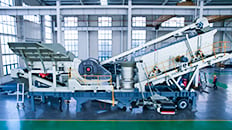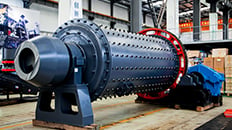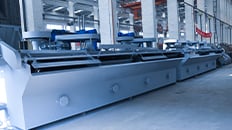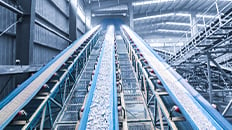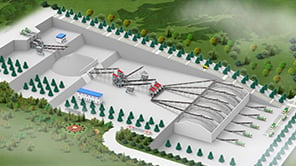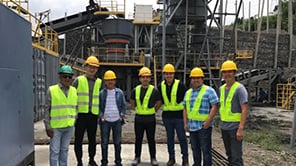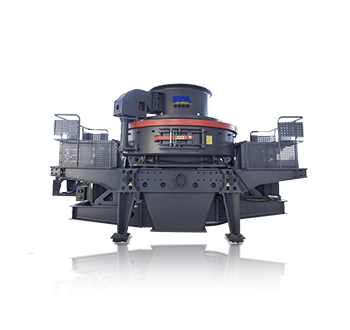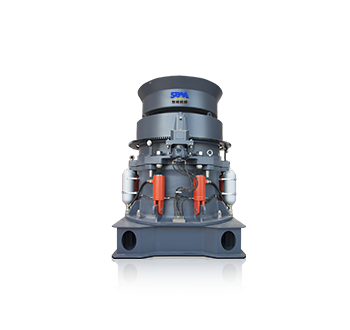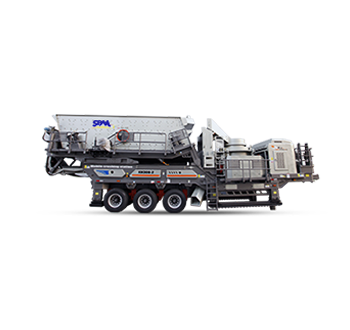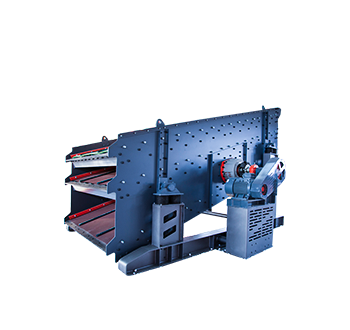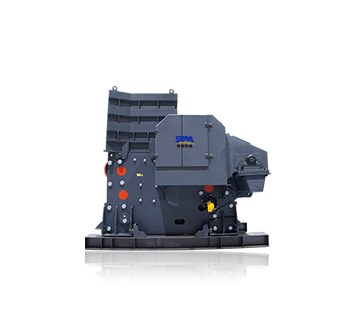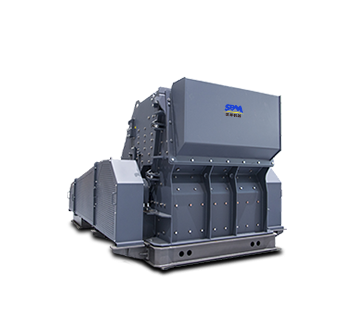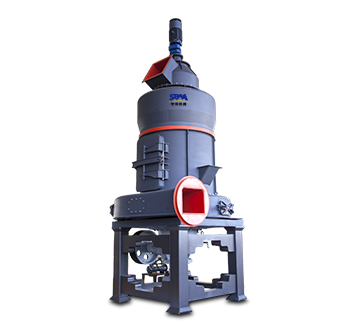Summary:Impact crusher is a versatile and popular type of crushing equipment used across various industries. They are a type of size reduction machine that uses high speed impact forces to break down larger materials into smaller, more uniform sizes.
Impact crusher is a versatile and popular type of crushing equipment used across various industries. They are a type of size reduction machine that uses high speed impact forces to break down larger materials into smaller, more uniform sizes. Unlike jaw and cone crushers, which squeeze or compress materials between two solid surfaces, impact crusher impact the feedstock with a rotating blow bar or impact plates to reduce its size.
The main components of an impact crusher consist of a rotating rotor which houses blow bars or hammers, and stationary anvils or breaker plates positioned underneath the rotor. As the rotor spins, the blow bars or hammers are flung outward due to centrifugal force striking the feed materials against the breaker plates. This generates high-energy impact forces that fracture the materials against the breaker surfaces and between each other. Commonly used for processing hard, abrasive rocks along with recycled concrete and asphalt, impact crushers deliver cubical products through efficient and flexible impact crushing action, making them a favored solution across numerous industries.
Parameters of a Large-diameter Impact Crusher
What is an Impact Crusher?
An impact crusher is a common stone crusher used to break large-sized materials into smaller particles. It is commonly used in industries such as mining, construction, and recycling to break down various materials like rocks, ores, and concrete. Impact crushers are versatile and efficient for reducing the size of materials and are often used in the production of aggregates for construction and road building.

Working Principle of Impact Crusher
When the material enters the impact zone of the hammer, it is crushed by the high-speed impact of the hammer and is then thrown onto the impact device installed above the rotor for secondary crushing. It then bounces back to the impact zone and is crushed again. This process repeats until the material is crushed to the desired particle size and discharged from the bottom of the machine. Adjusting the gap between the impact rack and the rotor frame can achieve the purpose of changing the particle size and shape of the material.
The working principle of an impact crusher has the advantages of high efficiency, energy-saving, and environmental friendliness. It has high crushing efficiency and can break large-sized materials into smaller particles, making it suitable for various industries. Additionally, an impact crusher has low energy consumption and noise levels, contributing to environmentally friendly production.
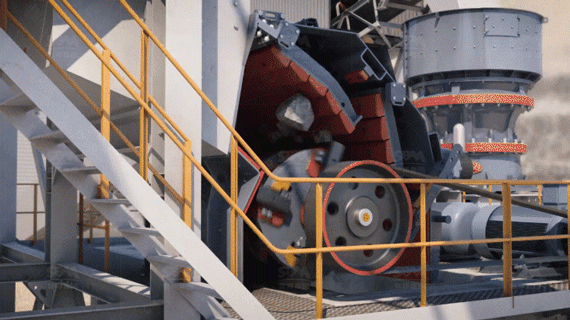
The Parameters of a Large-diameter Impact Crusher
A large-diameter impact crusher is an efficient crushing device primarily used for crushing materials of medium hardness. Different models of large-diameter impact crushers have different processing capacities and application ranges, allowing for selection based on specific requirements.
Now let's take a look at the parameters of a large-diameter impact crusher. The parameters of a large-diameter impact crusher include rotor specifications, feed opening size, feed particle size, and output. The rotor diameter refers to the size of the rotor, with larger diameters generally indicating higher crushing efficiency. The feed opening size refers to the diameter of the opening through which the material enters the crushing chamber and is an important parameter determining the feed particle size. The feed particle size refers to the maximum size of the material, and a large-diameter impact crusher is typically capable of handling larger material sizes. The output refers to the amount of material that the large-diameter impact crusher can process per hour and is usually measured in tons.

Here are three examples of large-diameter impact crusher parameters for your reference.
CI5X1315 Impact Crusher
Model: CI5X1315
Rotor Specs(mm) : 1300×1500
Inlet Size(mm): 1540×930
Input Size(MAX)(mm): 600(recommend≤300)
Capacity(t/h): 250-350
Power(kw) : 250-315
Shape Size(mm) : 2880×2755×2560
CI5X1415 Impact Crusher
Model: CI5X1415
Rotor Specs(mm): 1400×1500
Inlet Size(mm) : 1540×1320
Input Size(MAX)(mm): 900(recommend≤600)
Capacity(t/h) : 350-550
Power(kw): 250-315
Shape Size(mm): 2995×2790×3090
Impact Crusher Installation: Complete Step-by-Step Guide
Installing an impact crusher correctly is crucial for ensuring optimal performance, safety, and longevity of the equipment. Impact crushers are widely used in various industries for their efficiency in reducing materials to desired sizes. However, improper installation can lead to significant operational issues, increased maintenance costs, and safety hazards.
This guide provides a comprehensive, step-by-step approach to installing an impact crusher, ensuring that all necessary precautions and best practices are followed. By adhering to these steps, operators can maximize the efficiency and reliability of their impact crushing operations.

Step 1: Pre-Installation Preparation
Step 2: Crusher Assembly & Positioning
Step 3: Rotor & Wear Parts Installation
Step 4: Drive System & Electrical Setup
Step 5: Lubrication & Hydraulic Systems
Step 6: Safety & Final Checks
Maintenance Tips Post-Installation
- Daily: Check wear parts (blow bars, aprons), belt tension, and lubrication.
- Weekly: Inspect bearings and rotor balance.
- Monthly: Verify foundation bolts and hydraulic systems.
Differences Between Impact Crusher and Hammer Crusher
As widely used crushing equipment, impact crusher and hammer crusher are often be compared by customers. They both have simple operation and reasonable price and there is a certain similarity from the crushing principle to the equipment structure. But, in the actual production, they have some differences. Here are the 10 differences between impact crusher and hammer crusher.
- 1. Different structure composition
- 2. Different crushing cavity
- 3. Blow bar and hammer head (working principle)
- 4. Wear resistance of the wearing parts
- 5. Discharge opening adjustment device
- 6. Water content requirements of materials
- 7. Blocking
- 8. Crushing ratio and products shape
- 9. Application
- 10. Maintenance
9 reasons and solutions about material blockage in impact crusher
Impact crusher is important equipment for medium and fine crushing in stone crushing plant. Blocking is one of the common faults in impact crusher.During the production process, the blocking of impact crusher will cause the equipment to be forced to stop, waste a large amount of time cleaning, affecting the efficiency of the entire production line.
So, what are the specific reasons about impact crusher blocking? How to deal with it? Here are 9 reasons and solutions.
- 1. the humidity of raw material is large, easy to stick and cause blockage
- 2. the feeding volume is too large and the feeding speed is too fast
- 3. the discharge speed is too slow
- 4. the hardness or size of raw material is too large
- 5. the parts of impact crusher wear
- 6. the V-belt is loose and the transmission kinetic energy is insufficient
- 7. the main shaft of impact crusher damaged
- 8. improper operation
- 9. improper design of the crushing chamber
Jaw Crusher VS. Impact Crusher VS. Cone Crusher
Jaw crusher, impact crusher, and cone crusher are widely used in the mining and construction industries for crushing various materials. Each type of stone crusher has its unique characteristics and advantages, making them suitable for specific applications.
This article presents a comprehensive comparison between jaw crusher, impact crusher, and cone crusher, highlighting their differences in terms of structure, working principles, crushing capabilities, and applications.

1. Structure and Working Principle
Jaw Crusher: Jaw crushers have a fixed jaw plate and a movable jaw plate. The movable jaw plate moves back and forth against the fixed jaw plate, crushing the material by compressing it between the two plates.
Impact Crusher: Impact crushers consist of a rotor with hammers or blow bars that spin at high speed. When the material enters the crushing chamber, it is struck by the hammers or blow bars and thrown against the impact plates, breaking it into smaller pieces.
Cone Crusher: Cone crushers have a conical-shaped crushing chamber with a mantle and a concave. The material is fed into the chamber and crushed between the mantle and concave as the mantle gyrates within the chamber.
2. Application Range
Jaw Crusher: Jaw crushers are commonly used for primary crushing in various industries, including mining, quarrying, and recycling.
Impact Crusher: Impact crushers are versatile and suitable for primary, secondary, and tertiary crushing. They are widely used in mining, quarrying, and construction.
Cone Crusher: Cone crushers are commonly used for secondary and tertiary crushing in applications such as quarrying, mining, and aggregate production.

3. Crushing Efficiency and Particle Shape
Jaw Crusher: Jaw crushers are known for their high crushing efficiency and can produce a relatively coarse particle shape. They are suitable for primary crushing of hard and abrasive materials.
Impact Crusher: Impact crushers are efficient in crushing materials with high compressive strength. They produce a cubical particle shape and are suitable for secondary and tertiary crushing applications.
Cone Crusher: Cone crushers are renowned for their ability to produce a well-graded and cubical particle shape. They are suitable for secondary and tertiary crushing, offering excellent particle shape control.
4. Capacity
Jaw crushers have a relatively lower capacity compared to cone crushers and impact crushers. They are suitable for small to medium-sized rocks and materials. The capacity of a jaw crusher is determined by the size of the feed opening and the eccentric throw of the movable jaw.
Generally speaking, impact crushers have a higher capacity compared to jaw crushers but a lower capacity compared to cone crushers. They are suitable for primary, secondary, and tertiary crushing. The capacity of an impact crusher is determined by the rotor diameter, rotor speed, and the gap between the impact plates and blow bars.
Cone crushers have a higher capacity compared to jaw crushers and impact crushers. They are designed for efficient secondary and tertiary crushing and can handle large volumes of material. The capacity of a cone crusher is determined by the closed side setting (CSS) and the size and shape of the crushing chamber.
5. Input Size
Jaw crushers can accept larger feed sizes compared to cone crushers and impact crushers. They have a larger feed opening, which allows for the entry of larger-sized rocks and materials.
Impact crushers have a smaller feed opening compared to jaw crushers and cone crushers. They are designed to accept smaller-sized rocks and materials. The input size of an impact crusher depends on the type of rotor and the configuration of the crushing chamber.
Cone crushers can accept a wide range of feed sizes. They have a conical-shaped crushing chamber that gradually narrows as the material progresses towards the bottom. This design allows for the entry of various-sized rocks and materials.
6. Output Size
The output size of a jaw crusher is determined by the distance between the jaws at the top and the bottom of the crushing chamber. Jaw crushers are capable of producing a relatively coarse output size. The final product size can be controlled by adjusting the gap between the jaws.
Impact crushers produce a cubical output size. The final product size is determined by the gap setting between the impact plates and blow bars, as well as the rotor speed. Impact crushers are capable of producing a range of output sizes, depending on the specific application and desired end product.
Cone crushers are known for producing a well-graded and cubical output size. The final product size is determined by the CSS and the position of the mantle in relation to the concave. Cone crushers provide excellent control over the particle shape and size distribution.
7. Maintenance and Operating Costs
Jaw Crusher: Jaw crushers have relatively low maintenance requirements and operating costs. However, they consume more power compared to impact and cone crushers.
Impact Crusher: Impact crushers require moderate maintenance and have moderate operating costs. They are energy-efficient and offer good cost-effectiveness.
Cone Crusher: Cone crushers have higher maintenance requirements but generally lower operating costs compared to jaw and impact crushers. They are energy-efficient and can provide cost savings in the long run.
What Is an Impact Crusher Used For?
An impact crusher is a versatile size-reduction machine designed to break down various materials, including rocks, concrete, and recycling waste. It operates by striking these materials with high-speed rotating hammers or blow bars, which causes them to shatter upon impact. This mechanism makes impact crushers particularly effective in producing uniformly sized aggregates and recycled materials.
This article explores the functionality, types, applications and advantagesof impact crushers, providing a comprehensive understanding of their role in modern material processing.
Key Applications of Impact Crushers
Aggregate Production
- Crushing Quarry Rocks: Impact crushers are commonly used to crush various types of quarry rocks, such as limestone and granite. These materials are broken down into uniform sizes suitable for construction applications, such as road base and concrete aggregates.
- Output Control: Many impact crushers feature adjustable aprons and grates that allow operators to control the size of the final product precisely. This flexibility is essential for meeting specific project requirements and ensuring consistent quality.
Recycling
- Processing Demolition Waste: Impact crushers excel in processing demolition waste, including concrete, asphalt, and bricks. By breaking these materials down into reusable sizes, impact crushers contribute to sustainable building practices.
- C&D Recycling Plants: They are particularly well-suited for construction and demolition (C&D) recycling facilities, where they help reduce landfill waste and promote the circular economy.
Mining & Minerals
- Breaking Softer Ores: In the mining industry, impact crushers are utilized to crush softer ores such as coal and gypsum. They effectively reduce these materials for further processing or direct use.
- Limitations: While effective for softer materials, impact crushers are less suitable for very hard materials, such as those high in silica content. In such cases, other types of crushers, like jaw or cone crushers, may be more appropriate.
Industrial Materials
- Crushing Glass and Ceramics: Impact crushers can also be employed to crush industrial materials like glass, ceramics, and specific metals. This processing is crucial for recycling and reprocessing these materials into new products.
Causes And Solutions Of Unbalance Of Rotor In Impact Crusher
High speed rotating rotor with blow bar is the main working part of impact crusher. In order to meet the requirements to crush large sized ore, the rotor should have sufficient weight and run stably.
After replacing new blow bar and assembling and repairing old blow bar, maintainers should pay attention to the balance of rotor. Here are the consequences, causes, solutions of unbalance of rotor and maintenance of the rotor.
Consequences Of The Unbalance Of Rotor
1) Unbalance of rotor will produce a large inertia force and inertia moment, which will cause the unstable operation of impact crusher;
2) The unbalance of rotor will cause greater vibration of the components, generate additional dynamic loads, destroy the normal operating conditions of impact crusher, make the bearing temperature rise too high, shorten the service life, and even cause cracks and damage to some parts.
Reasons About The Unbalance Of Rotor
1) The quality of rotor is not up to standard. The manufacturer does not strictly follow the manufacturing requirements, and the rotor is not qualified;
2) The end face of the rotor body is severely worn, and the wear is uneven, making the center of mass and the center of the rotor body are not at the same position, resulting in the static and dynamic balance of the rotor cannot be guaranteed;
3) The uneven feeding of impact crusher causes uneven force on the rotor and disrupts the balance of rotor.
Solutions About The Unbalance Of Rotor
1) Carry out balance test on the rotor before put the impact crusher into production;
2) Raw materials should fed into impact crusher evenly and continuously to avoid uneven force on the rotor;
3) When replacing the blow bar, it is best to replace it symmetrically or change the whole set, and install it correctly.

